Thousands of years of history and tradition are found in hunting, the very survival of the human species has depended on people’s ability to procure protein and nutrients via the hunt. But as time has changed who and why humans hunt, time has also brought new tools into play. Tools like rangefinders are not to be overlooked when planning a hunt. Let’s look at some reasons why you want to have a rangefinder in your hunting gear.
Sponsored by Crimson Trace
Ethical and responsible hunting is something that good hunters strive to achieve. There are people who have an aversion to hunting because of misconceptions they have about why and how people harvest game animals. Using a tool, such as a rangefinder, helps make hunting more successful, with less risk of misjudged distances and improperly placed shots. A rangefinder can help a hunter ensure how far away an animal is, and then use the correct hold or dial the correct amount in the optic to ensure a perfect, ethical shot on target.
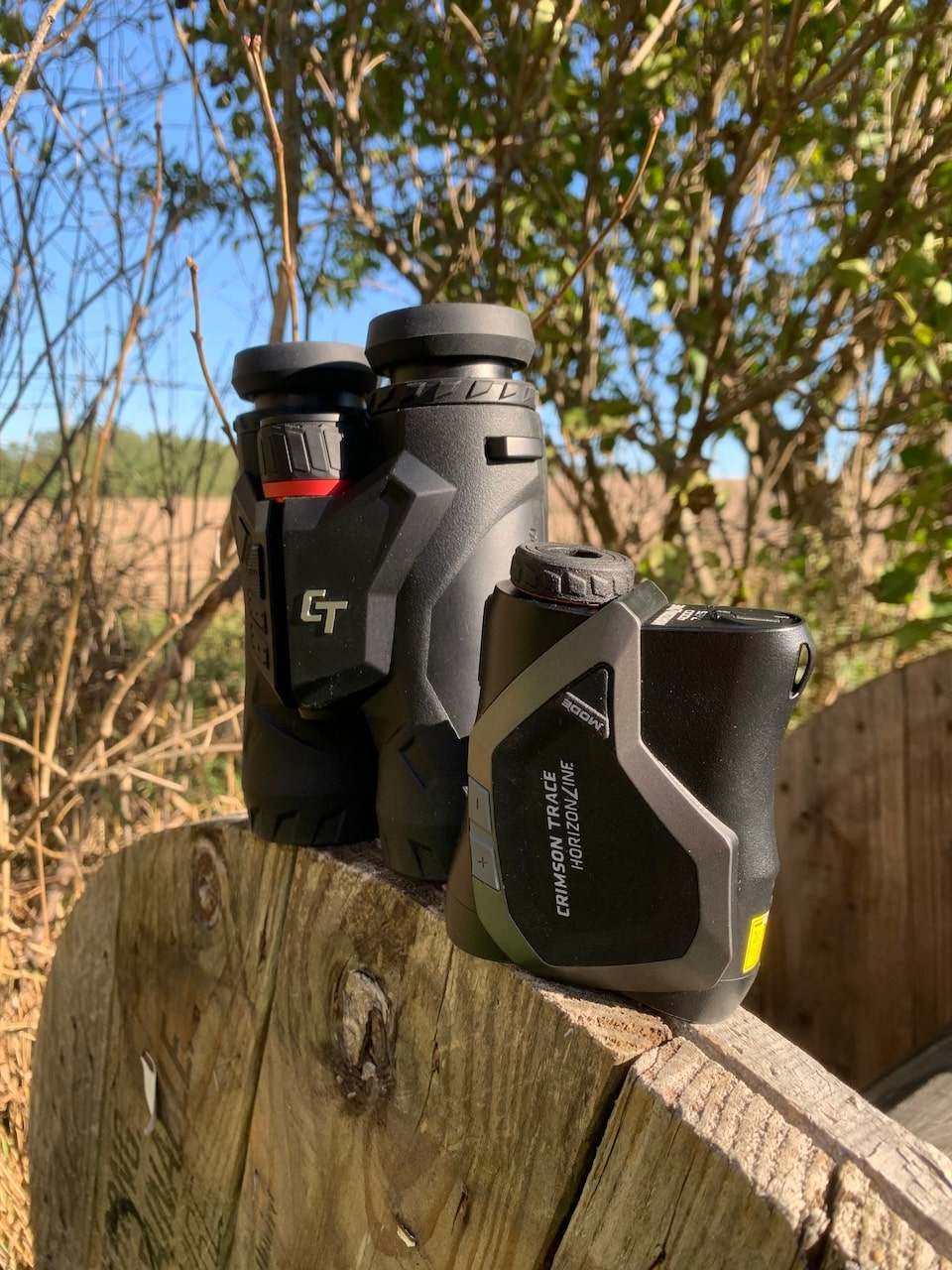
If you have ever worked with binoculars versus a monocular rangefinder, you know already that binoculars allow you to use your vision in a much more natural way. Humans are used to looking at things with two eyes, and it’s more intuitive using binoculars, to bring them up and have the field of view be on your target.
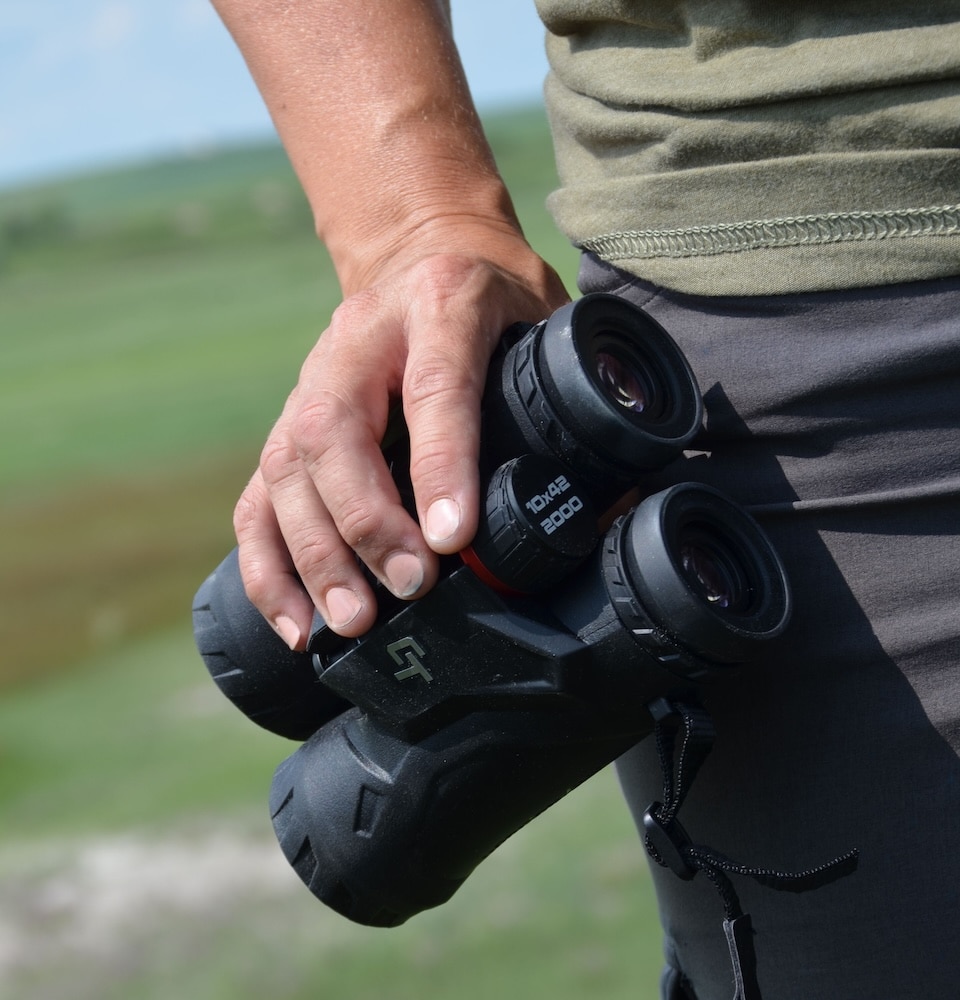
With a monocular or a single tube optic, like a rifle scope, it takes some practice at being intentional and looking at your target and raising the optic up to your line of vision so that you are on target. (This is the same for birdwatching as it is for shooting a rifle at distance.)
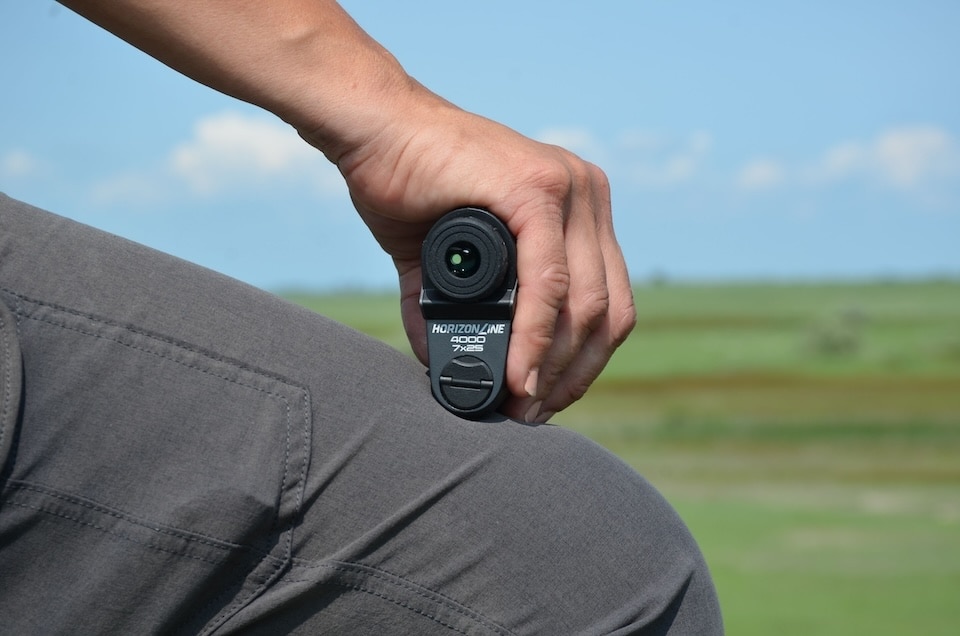
Regardless of which type you choose, you’ll need to practice before going into the field.
Binos that do double duty by ranging targets are just a smart decision. One reason a good rangefinder or binos, which are usually more powerful than a simple monocular, are helpful is in discerning the game. Are you hunting at dawn or dusk and can a pair of binos help you see what’s coming through the brush? Do you need to determine if it is a buck or doe? Are those ducks coming in the correct species for you to shoot?
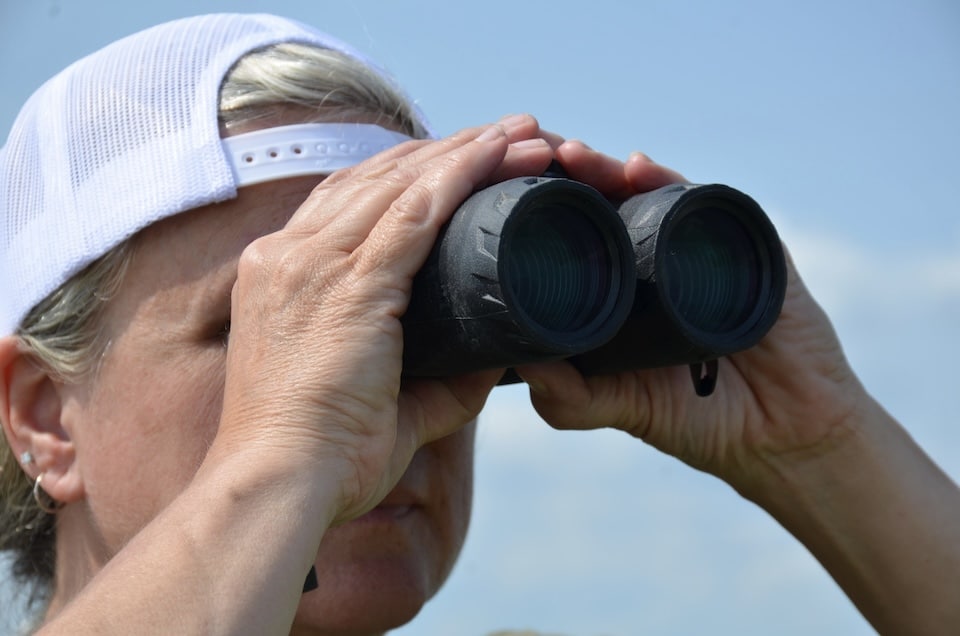
Even more reasons are situations that require a hunter to see clearly: Can you see your target and beyond well enough to ensure it’s safe to take a shot? Is that more than one animal? Are my friends making a drive coming through the brush, or is it an animal? These can all be more reasons to have a set of binoculars when hunting.
Another way to use a rangefinder is to range the most likely places you will shoot ahead of time. Most hunters scout out areas for their hunts. They might put up trail cameras and look for a place to put their blinds or stands that will bring the best chances of harvesting wild game. In an enclosed blind, a hunter can make a range card, something that tells them how far it is to the path, hill, tree or rock, within the scope of an animal’s travels. This saves time and movement and potential noise during the actual hunt. It also can help you, if you range a location prior to hunting, and know how far things are, to sort of sanity check your ranging in the moment. If an animal comes out between two locations you have already ranged, you have information to help you discern if your range to the animal is correct. You’re good to go, and time is of the essence here. Animals don’t stay around and quarter perfectly.
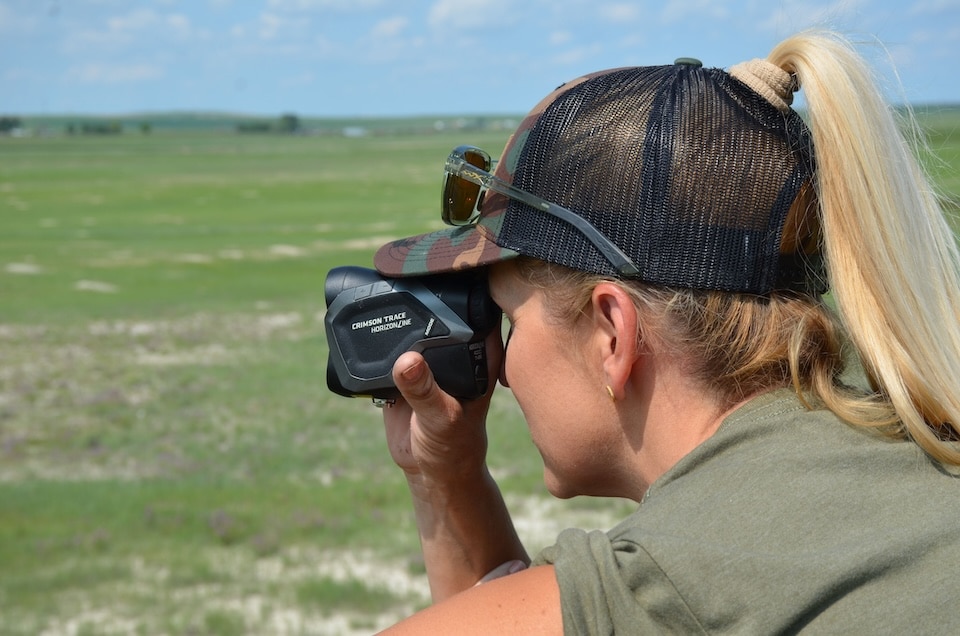
A good rangefinder has some features that will make using it more enjoyable and easier.
Two rangefinding products that hit it out of the park with great features are Crimson Trace’s Horizon Line Pro Rangefinding Binos and Crimson Trace’s Horizonline 4000 Rangefinder. You can read all the specs here in this review by Michelle Cerino.
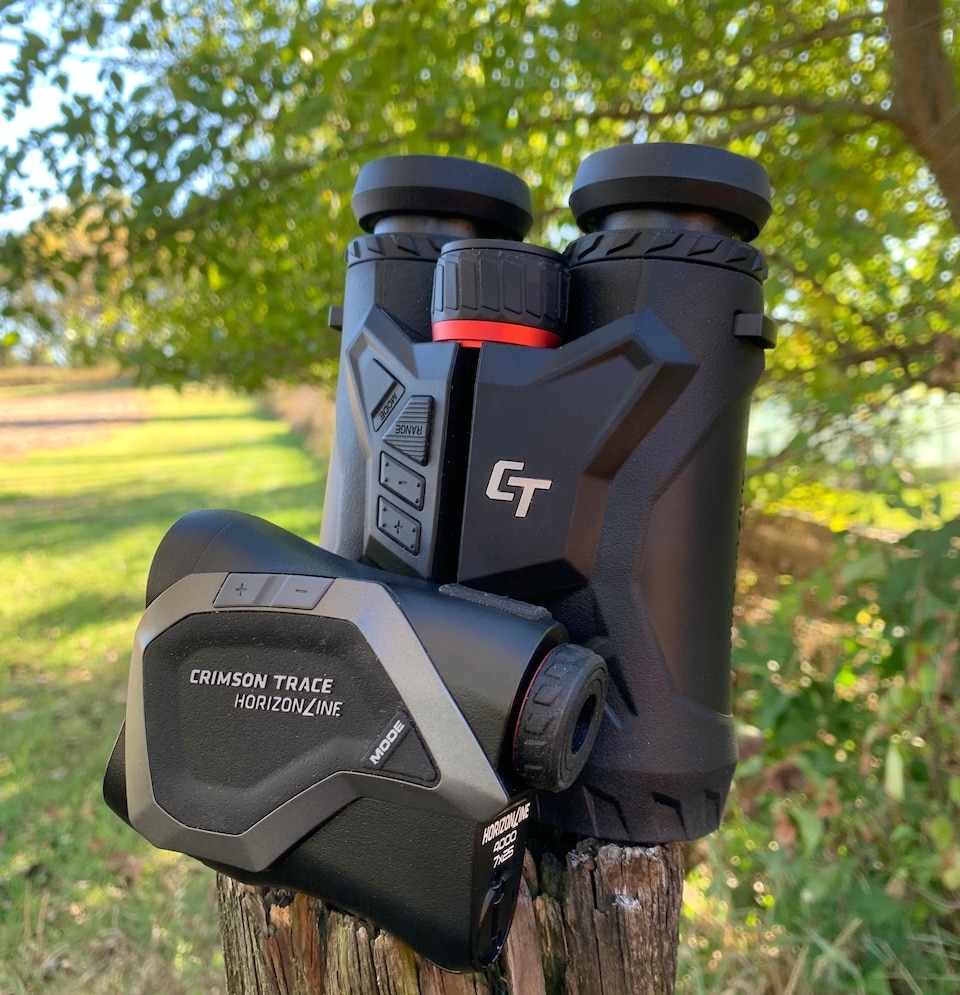
The highlights that you should take away are that the Crimson Trace rangefinding binos and rangefinder are exceptionally suited to hunting. They even come with a harness for the binos and a belt clip for the rangefinder, to free your hands up for carrying your firearm. Both have a threaded mounting option; the rangefinder can mount with a camera tripod adapter right to your camera tripod with nothing else needed. The binos need a very affordable mount that you can find easily online. This allows you to set them up on a tripod so you can glass an area without having to hold the binos in your hands.
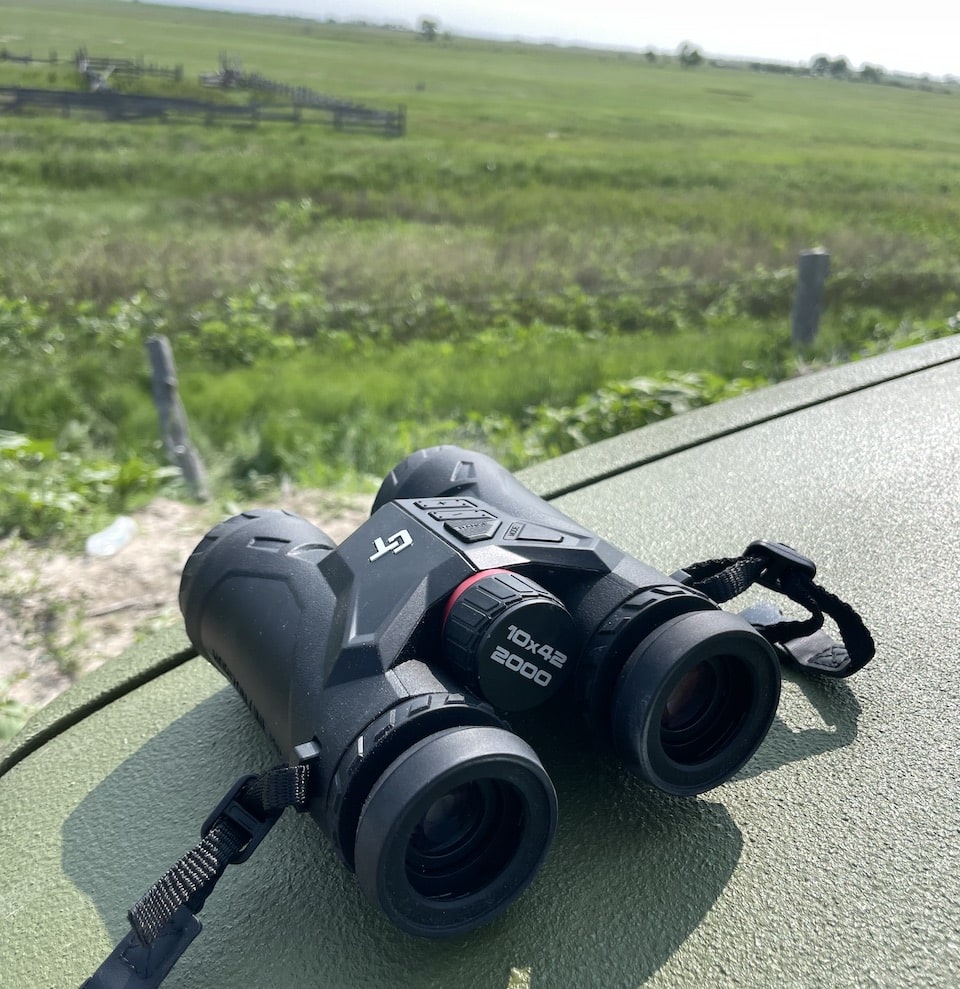
The binos weigh in a little less than some of their more “spendy” counterparts and have a polymer housing with a rubber outer shell. They also boast an IPX4 water resistant rating. The real difference in any optic is the glass you look through, and if it’s a rangefinder, the sensors for ranging.
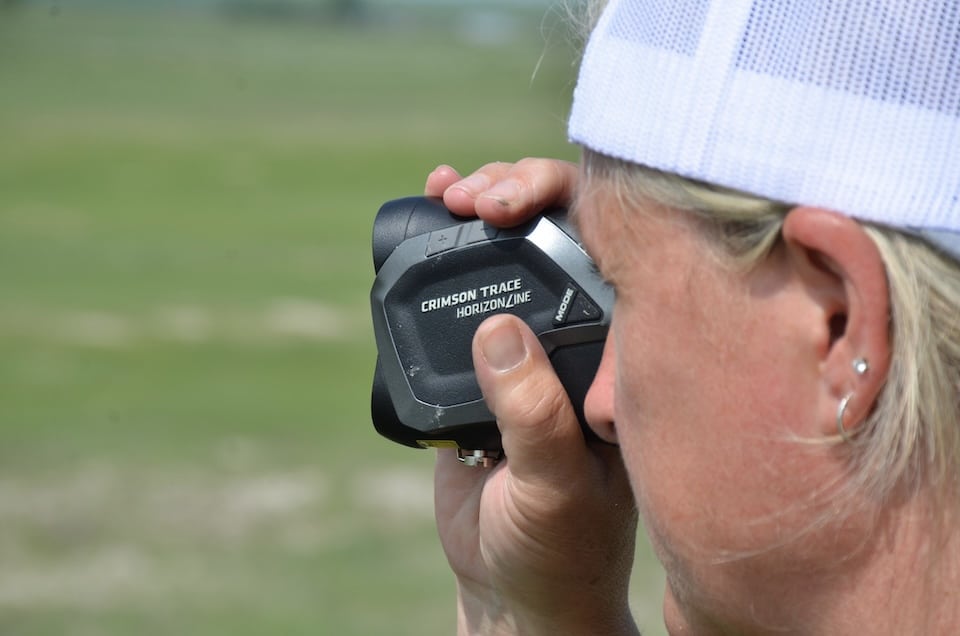
Another noteworthy aspect of the Crimson Trace rangefinder is that it ranges when you press the button versus ranging on release.
For ranging targets without a support or without your rangefinder mounted to a tripod, it’s nearly impossible to be completely motionless. Pressing the button creates a little movement ( just like hand-holding a camera with a slow shutting speed). But releasing the button without moving is even more difficult. Crimson Trace did their due diligence in designing their product with the more desirable option.
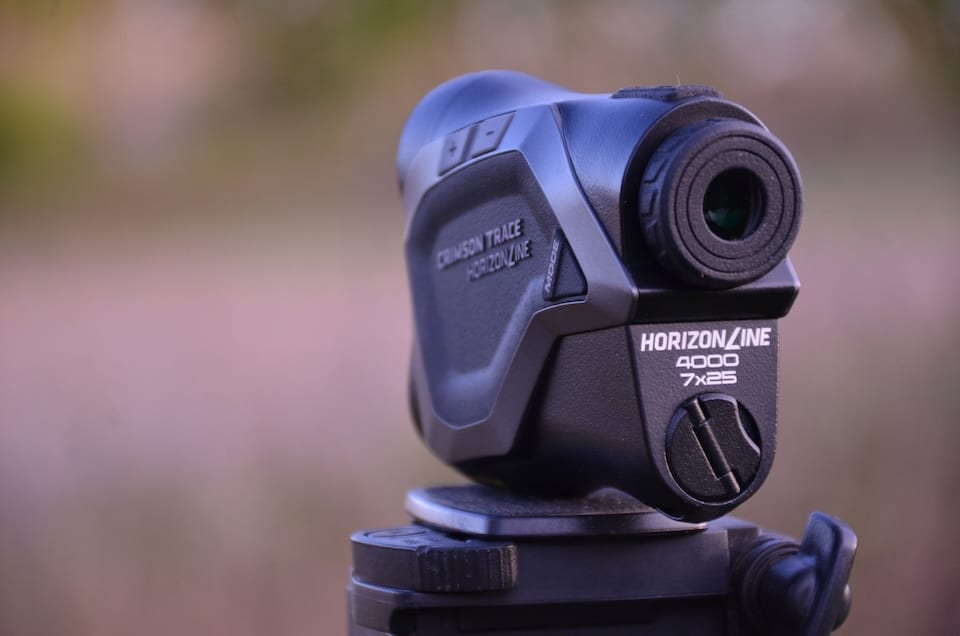
I was shocked at how accurate the Horizon 4000 rangefinder was through my living room window! I was not able to get a read with the binos through the same window. The big difference is that the Horizon 4000 rangefinder has a sensor that can read reflective targets (think steel target) to 4,000 yards and animals to 1,300, whereas the Horizon binos are 2,000 and 800 yards respectively. I liked them both for different reasons. Considering that most hunters are not going to shoot an animal out to 800 yards, they are both overkill on ability to range animals. If you were going to purchase one of these two, I would go with binos for general hunting and ranging use, and I’d go with the 4000 if you shoot something like PRS and targets out farther than 1,000 yards.
Both of these Crimson Trace products come with detailed guides to help you use them to their full potential. But for hunting, for something to range your targets and ensure ethical shots, these are a great option.
Visit Crimson Trace to learn more about its line of rangefinders.
Becky Yackley primarily competes in 3 Gun, USPSA, Bianchi pistol, but has competed in shooting since 1989 in disciplines from service-rifle, to NCAA Air Rifle and Smallbore, air pistol and a little bit of long range rifle. She shoots guns and cameras at competitions around the country, and writes in her fictional spare time. View all posts by Becky Yackley